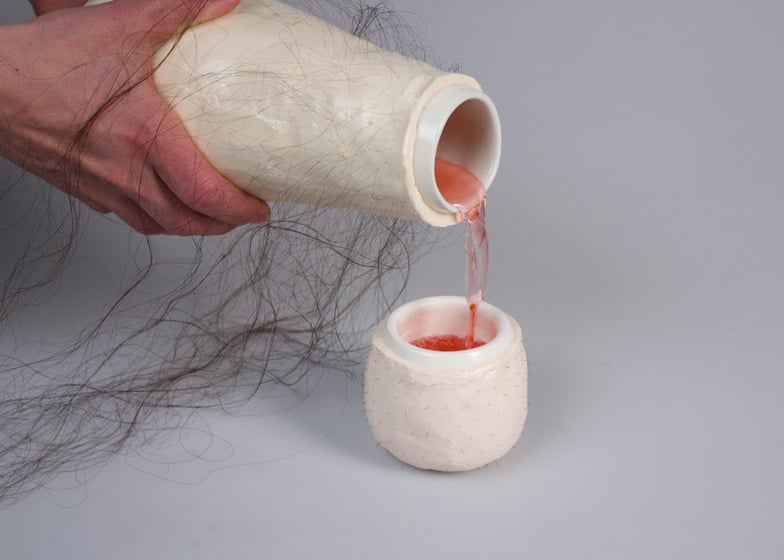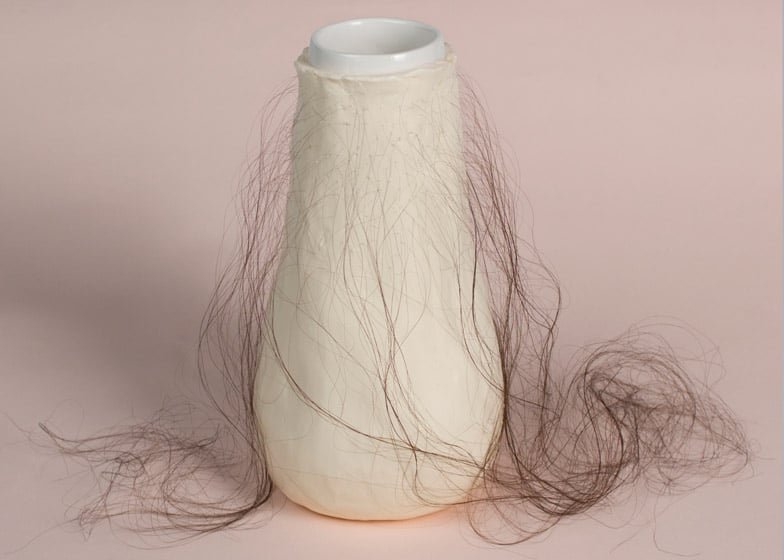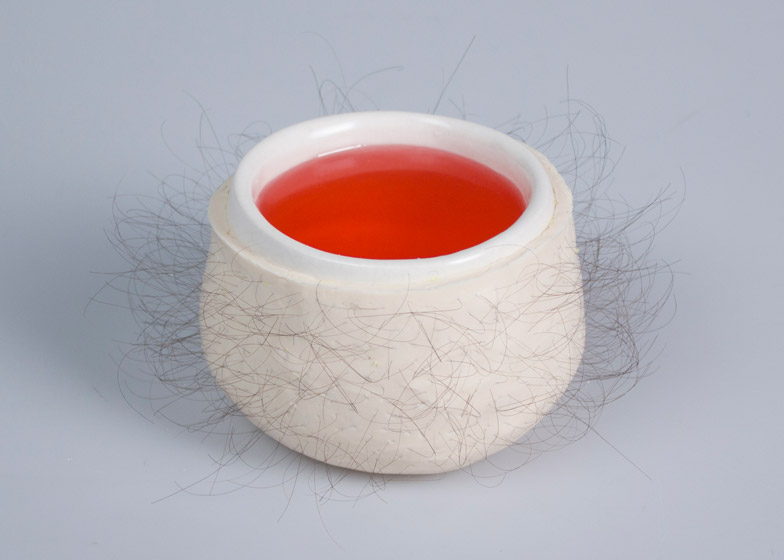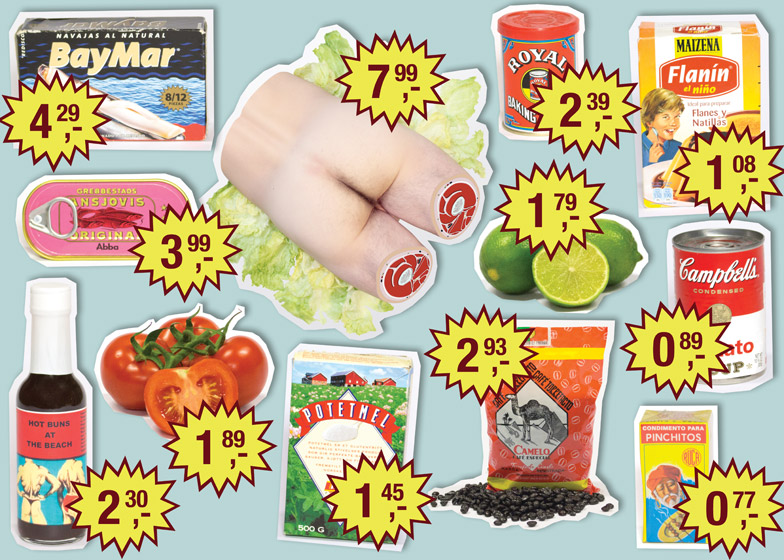Graduate shows 2015: intended to promote eating humans, the Guide to Cannibalism provides recipes for cooking meat, and also comes with kitchenware embedded with real hair (+ slideshow).
To Eat or to be Eaten – A Guide to Cannibalism is design graduate Antonio Cascos Chamizo's masters project from the Oslo National Academy of the Arts.
Combining graphic and product design to challenge a "food taboo", Chamizo created a fictional scenario in which cannibalism is socially acceptable.
"The attempt of my project is to create a circumstance that encourages us to transcend our own perspective given by our own socio-cultural frame, where our experience of the design construct becomes the project in itself," he said.
Chamizo gathered information and facts that he believes ethically justify cannibalism, to promote its potential as a solution to global issues such as overpopulation and lack of resources.
These facts are presented in a guide, which includes chopping charts for correctly butchering bodies to get the best cuts, and recipes for ways to cook the meat with other foods.
"Different parts of the human body require different cooking methods and different cooking times, depending on the qualities of the muscles," reads the guide, which also comes with a list of wine recommendations that would bring out the flavours of human.
"Meat from well exercised areas of the human tends to be tough and typically needs longer cooking time or marinating," it states. "The cuts that better will suit a stew are upper arms, upper legs, neck and shoulders."
The designer created a series of Plasticine models to demonstrate the recipes, such as tenderloin with cider and mango tartare.
Chamizo also designed a range of four vessels called The Hairy Bowls, which are designed to look like human skin and are covered in real hair.
The jar, mug, coffee cup and tea cup provide an option for repurposing the non-edible leftovers, and are intended as merchandise to accompany the guide.
According to the designer, the project was created to "generate dark, extreme and more complex emotions that provoke unpredictable outcomes, which can question the limited range of emotional and psychological experiences offered through most design to challenge narrow assumptions, preconceptions and givens".
"The task of the scenario or design construct is to become a conduit for this experience," Chamizo said. "It is presented to the user as a dilemma, making use of humour and irony, avoiding being moralistic or didactic, celebrating unreality, exposing assumptions, provoking and sparking debate."
Food is increasingly becoming a territory explored by designers. Projects range from real applications, such as protein bars made from powered crickets and edible fungi that digests plastic as it grows, to a synthetic biology proposal that involves altering the human digestive system so it can digest rotten food.




